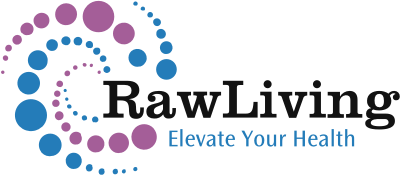Cornish Seaweed Company - Irish Moss
Irish Moss (also called Carrageen) is primarily used as a vegan alternative to gelatine, a thickener for soups, stews and sauces and to make tea with to act as a cough medicine. It can also be applied on the skin to soothe burns. It's a great vegan source of vitamin K2, and other minerals to build healthy bones and teeth. it's gelatinous nature makes it a super food for the gut, just like psyllium, flax and chia.
Check the How To Use tab for instructions on how to prepare raw Irish moss - it's not digestible straight out of the packet! Also find a recipe herefor Acai Strawberry Grapefruit Mousse.
Taste:Irish Moss is virtually tasteless but has a mildly sweet odour.
Seaweeds are the most powerful food that we have on this planet. Not really plants, they are algae, growing in the shallower parts of the world’s oceans. Seaweeds contain all the minerals that our body needs and have the highest number of vitamins, minerals and trace elements compared to any other food group.
Unsurprisingly, it has played a vital part in the diets of a large number of cultures, including the Inuit, Japanese, Incas and the Irish. Did you know that the Inuit get all their vitamin C from seaweeds?
Seaweeds contain unique compounds that help the body remain healthy.
Seaweeds live in a very complex environment and are exposed to extreme and rapidly changing environmental conditions, including great changes in salinity, desiccation, exposure to high UV levels, temperature and nutrients. To survive and adapt to these conditions they have developed special mechanisms that are unique or are present at much higher concentrations than in any other plant or animal. These mechanisms include chemical components which cannot be found in other organisms and many of these prove to be very valuable for human health.
A high quality product and sustainability, in our eyes one does not come without the other. These two core business values guide us forward and help us produce the highest quality seaweeds, now and into the future.
It starts with a licence
We are fully licenced to harvest seaweed by the Crown Estate. The qualifying principle for a licence is sustainability and approval from Natural England.
Because we were among the first to start a seaweed business in England, there was a need to establish the Code of Conduct for Seaweed Harvesting, which Natural England established with our collaboration. The Code lays out harvesting guidelines to ensure harvesting is carried out without significantly impacting the ecosystem.
Code of Conduct examples of guidelines
- Seaweed can only be harvested by hand
- Only a part of each individual plant can be cut, above the point of growth to allow regrowth
- Other wildlife should not be disturbed
- Harvest seaweeds during the active growth season to allow for quicker recovery
- Rotate harvesting areas to allow ample time for recovery. Harvested areas should be left for up to several years, depending on the species, before harvesting again.
Where we do not harvest from Crown Waters, we make sure we have consent from the relevant land owners.
Soil Association Organic Qualification – Ensuring High Quality, Nutritious Products
We are proud licencees of the Soil Association. Organic status guarantees our products and the location they are harvested from are of high quality – seaweeds need to be harvested from areas of high ecological quality and meet Class A or B standards as defined in Annex II of Regulation (EC) No 854/2004.
In addition, the EU regulation on organic production (EC) No 834/2007 states that collection should not affect the long term stability of the natural habitat or the maintenance of the species in the collection area.
To top it off, the Soil Association prohibits use of chemicals and requires us to have a proper waste management in place.
Renewable Energy
Extracting water from seaweeds is an energy-intense process. Where most, if not all, seaweed companies in the UK and EU use dehumidifiers, ovens or electric heaters, we have perfected our drying process so that our seaweeds are mostly dried using direct solar and wind energy. Saves energy bills, saves the climate.
Seaweed Research
Ensuring seaweeds are harvested sustainably is a bit of a challenge. Very little research has been carried out on regrowth rates, biomass and optimum harvest quantities in the long-term. But one has to start somewhere.
Together with Exeter University we have developed a monitoring project that will look at our harvesting regime, harvest quantities and biomass changes over the years. This will inform us and regulating bodies to provide more specific harvest deadlines and provide quota that are based on scientific data rather than anecdotal evidence.
Using scientifically equipped drones as well as through ground studies we aim to increase our understanding of seaweed growth rates, biomass, distribution and harvest impact on different species.
Use
For raw desserts, soak 5-10g irish moss in 1 cup of water, in an airtight container in the fridge. Soak for 1-3 days. When you're ready to use it, drain the water off (but DON'T rinse it under the tap). Add a fresh cup of water, and blend to a paste. Keep the paste in a jar in the fridge for up to a week. Blend the paste well into your recipe to make a light and fluffy mousse or pie filling, or add it to smoothies.
To make tea with, follow above instructions and add a tea bag of your favourite tea. Alternatively, simply add cloves, cinnamon, star anise and/or some honey to help against a chesty cough.
For soups, stews and sauces, simply add a handful of Irish Moss whilst cooking, and remove before eating.
Find a recipe for Acai Strawberry Grapefruit Mousse from Kate Magic here.




